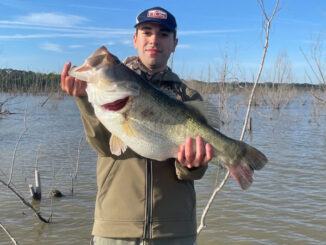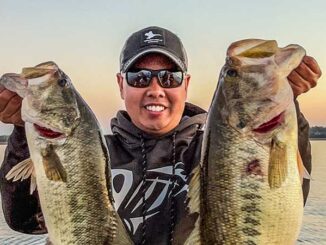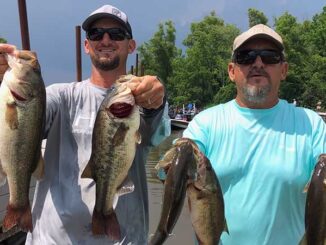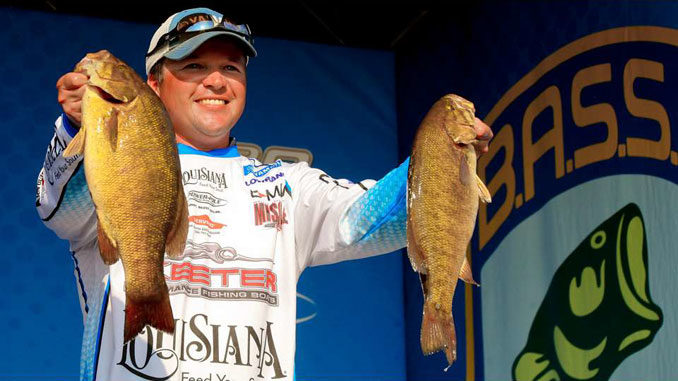
A popular, soft-plastic creature bait with a uniquely ribbed body is like dynamite in the hands of Derek Hudnall when he’s targeting bass in October.
“That time of year, I’ll be flipping a Missile Baits D-Bomb. That’s just my go-to. I catch a lot of fish on that,” he said, noting that bass are feeding for the winter months ahead.
“I’m looking for heavy cover, whether it’s laydowns or grass or underneath docks,” said Hudnall, 39, who fishes the Bassmaster Elite Series.
Toledo Bend
He can’t wait to fish waters closer to home, including Toledo Bend, where he loves to flip and pitch a D-Bomb as a soft plastic trailer for a 3/8- to 1-ounce jig.
“If you’re offshore ledge-fishing at Toledo Bend, that D-Bomb on the back of a jig really works well,” he said, adding that he matches the soft plastic’s color to the jig, usually a brown or a green pumpkin.
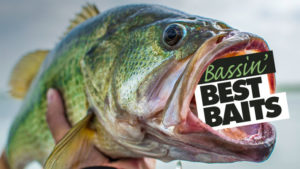 Much of the time, Hudnall Texas-rigs the D-Bomb and fishes it in “really heavy matted grass or wood or brush.” He’ll impale it on a 4/0 or 5/0 flipping hook — 5/0 if it’s extra heavy cover — tied to 50- or 60-pound Seaguar braid when probing the thick stuff and 20-pound Seaguar flourocarbon in sparse cover.
Much of the time, Hudnall Texas-rigs the D-Bomb and fishes it in “really heavy matted grass or wood or brush.” He’ll impale it on a 4/0 or 5/0 flipping hook — 5/0 if it’s extra heavy cover — tied to 50- or 60-pound Seaguar braid when probing the thick stuff and 20-pound Seaguar flourocarbon in sparse cover.
The size of the worm weight depends on the type of cover, also, he said, noting he’ll use a 5/16-ounce weight if he’s fishing isolated cover, but if he’s punching matted cover he’ll use anywhere from a ¾- to 1½-ounce weight.
“The key to that is trying to get away with as light as you can. If you can get it down with a 3/4-(ounce), do that. Otherwise, the fish has the weight advantage,” he said.
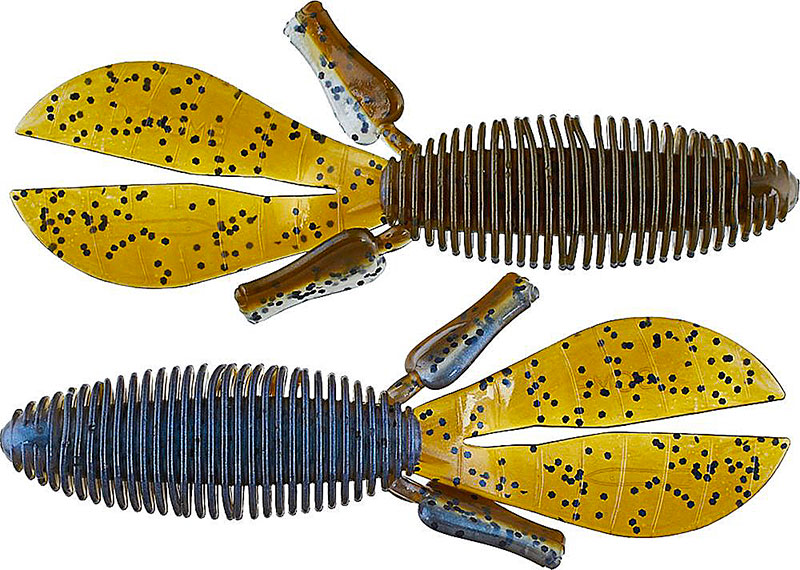 Weather conditions determine his bait’s colors in October. If it’s early or late in the day, or overcast, he likes black/red flake. If it’s sunny, he prefers natural colors like green pumpkin.
Weather conditions determine his bait’s colors in October. If it’s early or late in the day, or overcast, he likes black/red flake. If it’s sunny, he prefers natural colors like green pumpkin.
How effective is a D-Bomb? In Bassmaster Open tournaments the past four years, he has caught the tournament’s biggest bass three times, he said, “and every one on that.”
